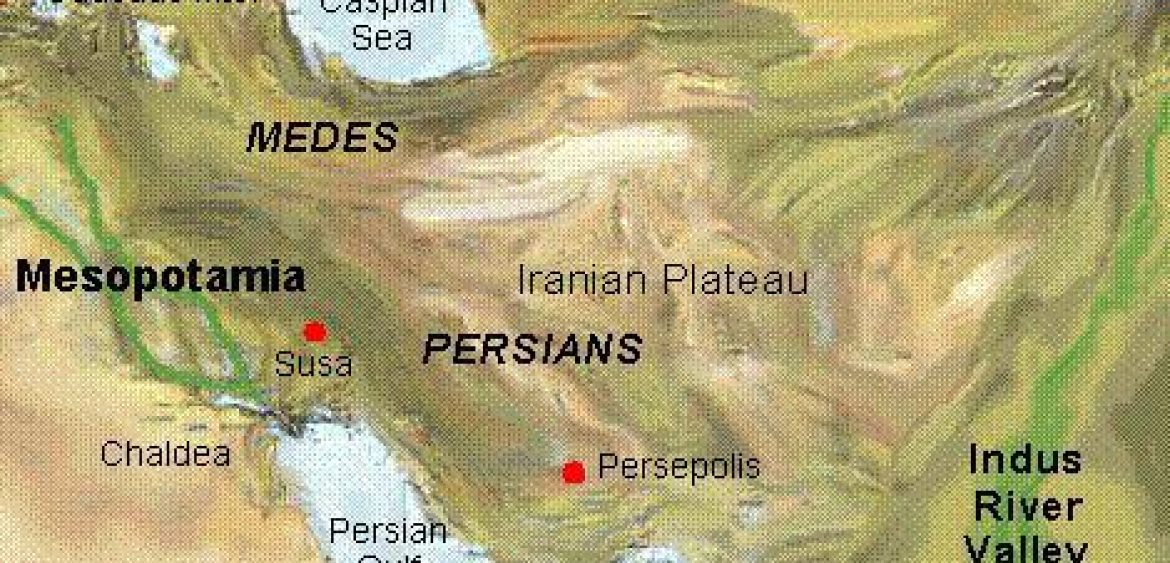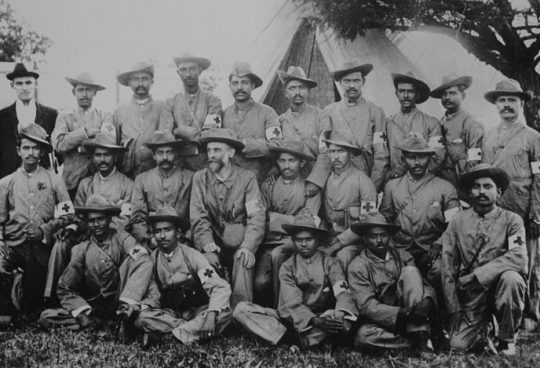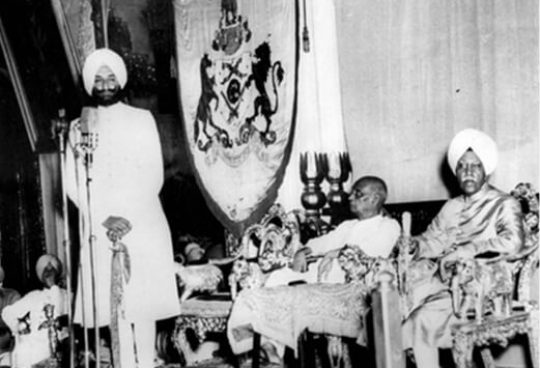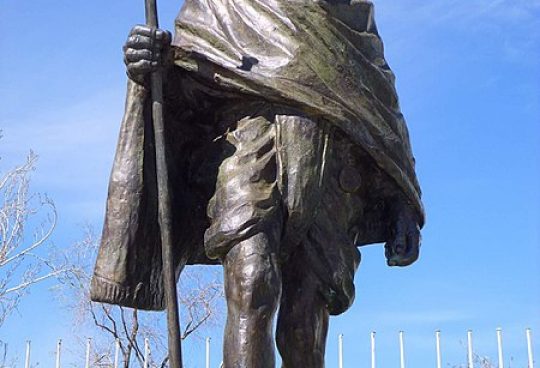We walked out of arrivals lounge in Shiraz international airport on that November evening in 2015 expecting to be met not by the young Indian waving to us but by our Iranian guide Reza. Wondering why there was a change in plans even before we commenced our long awaited tour of Iran, we advanced towards him. The smiling swarthy young man held out his hand and introduced himself as “Reza Vijay”, our Iranian guide. Intrigued with his strange sounding name- you could be either Reza or call yourself Vijay. As Indians we seldom meet people who present themselves with a Muslim given name suffixed with a Hindu surname. And yet here in the distant Islamic republic of Iran, the unimaginable began to take shape. After the pleasantries, he came out with the story. His given name is Reza Hamid, but Vijay it is for his friends because of his swarthy looks -the screen name of India’s hugely popular actor Amitabh Bachan. Everything just added up. Vijay chimes congruously well with Reza – just as so much of India does with Iran.
Introducing Iran a land which has human habitation dating back 10,000 years in a few pages is not an enviable task. Yet I venture to do the improbable with the innocuous chutzpah of a traveller coming to Iran that was opening its doors 30 years after closing them to the world on a cold January day in 1979… Giddy with relief that Iran was opening up finally, excited that it was not over exposed as Athens, gushing to tell the world about the best kept secret of the generation.
Who are the ancestors of modern Iranians? When did the Persian empire emerge from the Iranian plateau? What processes and events induced a heterogeneous Persian empire to congeal into a homogeneously Shia-Muslim state of Iran? How does progression of time leave its imprint on a people and its land to show a traveller like me passing through these lands, thousands of years later, what went by and what is left behind? Where and when does the gargantuan Persian empire, a nemesis for generations of Greek soldiers and an ultimate challenge for Alexander, converge into the compact Islamic republic of Iran? What incontestable cultural legacy have the Zoroastrian Achaemenid and Sassanid, Hellenic Parthian, Central Asian Buyid and Samanid and Shia’ite Safavid empires left for the world?
For whatever it is worth, I choose to throw a glance back at the Iranian plateau three thousand years ago. Archaeologists believe that the Iranian plateau was home to numerous ancient civilisations, cultures and urban settlements a few of which are the Kura-Praxes culture, Jiroft culture and the more familiar Elamite civilisation (2700- 540BC) which had its capital at Susa. Elam was finally wiped out when their capital Susa was razed to the ground and sown with salt by the Assyrian armies of Ashurbanipal around 646 BC. As Elam was disappearing into the sands of western Iranian plateau , a new empire was being conceived in a conflict between the Persians and Medes. These two groups of people were the ones that emerged the strongest out of the many groups of speakers of Indo-european languages that appeared in Iranian plateau around 2500 BC calling themselves Aryans.
The Aryans who moved from Central Asia alternatively subdued, intermingled and assimilated with the indigenous peoples by domesticating the horse, inventing the chariot and cross bow. While some of these people went down towards the Indian plateau to found the Indus valley civilisation and leave the only extant documentation of lives at that time in the form of Rig veda, some other bands settled themselves on the Iranian plateau and called it Aryana Vaejah ( the land of the noble). This area today lies in northern Afghanistan, Uzbekistan and Tajikistan. However these people were driven out from there around 800 BC. They moved south-west and after fierce encounters with the Assyrians who were in occupation of those lands, the Medes survived to settle in northern Iran as we know it today while some other groups made way to the south to the area called Parsa. Initially, the Medes gained independence from the Assyrians and established an Iranian empire of sorts. But roughly around 550 BC it is with the encounter between the Medes and Parsas and the victory of the young Cyrus, grandson of the Medean king Astyages that the Persian narrative begins.
This narrative which begins with the great Achaemenid empire of Cyrus and his progeny – aka the first Persian empire – knit together forty percent of the world’s people two thousand five hundred years ago. As an empire and more as a civilisation, Persian influence spread out unifying distinctly disparate cultures from far flung reaches of India to the caucuses and Egypt. The greatest treasures of humankind’s recorded history are a legacy of Persian emperors like, Cyrus, Darius, Xerses and Artaxerxes.
The demise of the first Persian Empire was a result of the hubris of its emperors who could not withhold themselves from hurtling their armies repeatedly in to the Greek world. Darius started it followed by his son Xerxes. Yes, Persians’ generational wars against the Greeks was to be the Achaemenid empire’s undoing. Alexander drove the proverbial final nailing the Achaemenid coffin in 333 BC. He charged though Persia, chased the Persian emperor out, but fell in love with Persia unmindful of the Persian’s hatred for him. He dressed like a Persian, married a Persian royal lady and hoped to create a hybrid empire from the marriage of Macedonia to the remnants of Persia. However, he died before that and the first Persian empire was parcelled out between his generals.
Modern day Iran is part of the dynasty claimed by Seleucus Nicator one of his generals, who founded Seleucid dynasty. This dynasty, later expanded eastwards to include what is today Afghanistan, Pakistan, Turkmenistan besides many other dominions in the levant. More than two thousand years ago Seleucus, began the process of bringing the Persians and Hindustanis together and the process continues to this day.
Seluccids were succeeded by the Parthians who were originally nomads from Parni, who after settling in Parthia and building a small kingdom, expanded to rule one of the most enduring empires in Persian history. The Parthian empire was the most enduring of the empires of the ancient Near East. Calling themselves Arsacids after their first King Arsaces-I, their greatest moment was during the reign of King Mithradates the Great (171- 138 BC) by which time Parthian empire included all of modern Iran, Iraq Armenia,Georgia, Azerbaijan, Tajikistan, Turkmenistan, Afghanistan, parts of Turkey, and for a while territories in Pakistan, Syria, Lebanon, Israel and Palestine. Stretching from central-eastern turkey to eastern Iran, the Parthian empire was the lynchpin in the silk route trade between Roman empire and Han China. Besides so many other things, the Parthians are remembered everyday in the English speaking whole world for their “Parting Shot”. This expression derives from the expression “Parthian Shot” popularised by the English Poet Samuel Butler’s usage of it in his “An Heroical Epistle of Hudibras to his Lady :
You wound, like Parthians, while you fly,
And kill with a retreating eye
The Parthian Shot was a military tactic of the Parthians where archers mounted on light horses twisted their torsos to shoot arrows at their pursuers. This manoeuvre needed incredible equestrian skills that came naturally to the Parthians as the original tribe – Parni- of the Arcasid family came from semi-nomadic lands where the horse was the most important animal.
Debilitating wars with the Romans and finally breakout of small pox in the western fringes of the empire in modern day southern Afghanistan – Pakistan spelt the end of this great empire. Finally in 224 AD Adershir I from Fars in central Iran broke away and established a new kingdom which grew to be the mighty Sassanid empire.
Sassanids or Sassanians as the new rulers called themselves after the name of Adershir-I’s forefather, came from the same region as did the first Persian emperors of the Achaemenid empire. Like the Achaemenids they set about reinvigorating Persian values and religion in their reign. Zoroastrianism was codified and upgraded to the status of state religion. Kartir- the chief magi(priest) for three consecutive Sassanid emperors was an extremely powerful man who is believed to have persecuted believers of all other religions like Judaism, Christianity, Buddhism and even Hinduism that were prevalent in a pluralistic Iran of the time. But the worst farer was Manichaeism, whose founder Mani was sentenced to death by the emperor Bahram-1 at the behest of Kartir !
Prefixing the epithet, “ Shahnshah” – King of Kings, the Sassanids ruled for close to four hundred years till they were overrun by the Arabs in early seventh century that ushered in Islam into Zoroastrian Persia. Shapur-I (240-272 AD), who took Roman Emperor Valerin (253 to 260 AD) prisoner (depicted in the rock relief at Naqsh-e Rostam) along with Khosro-I (531-579 AD) were the greatest of Sassanid rulers who contributed to world cultural heritage through their encouragement to Zoroastrianism. Just as the Parthians were constantly besieged by the Romans in alliance with the Armenians, the Sassanids were forced to reckon with the Byzantines on the western frontier and with the emergent turkish tribes on the eastern front. However the nomadic Arabs on the south western frontier proved to be the Sassanian’s undoing. A brilliant attack on the Sassanid capital of Ctesiphon in the the spring of 633 AD during the reign of Khosro’s grandson Yezdegerd dealt a deathly blow to the Sassanid rule and ushered in Islam into Persia.
Ummayid Caliphate which conquered Persia was thrown out by the Abbasid Caliphate which tried to have a hold on Iran for a century. Gradually as the provinces broke away two native Iranian dynasty’s consolidated their positions with the Abbasid clip as a figurehead. In the east was the Buyid dynasty in the area along Caspian sea where the Medes once ruled and the other was Samanid dynasty in the west. Between them they ushered in a renaissance of all things Persian including literature, poetry that led to the creation of the new Persian language Farsi- a mixture of Arabic and middle Persian. In these times flowered the genius of Firdowsi composer of the Iranian national epic “Shah-nameh” – a collection of sixty thousand verses and of Omar Khayyam- a mathematician in the court of emir of Bhukara better known for his “ Rubayyat”.
The Samanids were succeeded by the Ghaznavids, the Khwarazm-Shahs, the Il-Khanids, the Timurids and finally the Safavids (1501 to 1722) which arguably is Persia’s greatest empire after the muslim conquest. The Safavids introduced Shia Islam to Persia and made it the state religion; and it continues to be the state religion even today. Safavids were succeeded briefly by Ashrafid dynasty established by Nader Shah after which the notable dynasties were the Zand dynasty which ruled from Shiraz and the Qazar dynasty which made Tehran the capital, which it continues to be till date. The overthrow of the last Qazar ruler in a military coup in 1925 ended the Qazar dynasty after which The Pahlavis came to power by declaring Reza Shah as the new monarch of the Imperial State of Persia (subsequently changed to Imperial State of Iran in 1935). He who founded the Pahlavi dynasty which was overthrown in 1979 during the Iranian Revolution led by Ayatollah Khomeini. From thenceforth Iran calls itself the Islamic Republic of Iran.
Persia became Iran as if to acknowledge that it was not the home just for the first dominant group of ancient Persians but a sanctuary for a nation of people who profess different faiths- Shiis, Sunnis, Jews, Christians, Bahais and Zoroastrians and of different ethnicity- Persians, Turkmens, Arabs, and Kurds.
As we drove through Iran with Reza “Vijay” I discovered incontestable cultural contiguity between Persia- Iran and Hindustan/India. Three millennia ago central asian ancestors of Indians and Iranians- Aryans, split ways, some to settle the Iranian plateau and others the Indus valley in north western India and parts of modern day Pakistan.The shared cultural memory and language of ancient Iran and Indus valley India find echoes in Avesta and Rig veda, Sanskrit and Avestan, sun worship, and the all important priestly class in both Zoroastrianism and Hinduism. The Rigvedic hotars and their Indo-Iranian counterpart Zaotars ( libation pourers during sacrifices) poured libations and made offerings to water bodies and made animal sacrifices to fire, purified ritual vessels with cow urine( rich in ammonia) and chanted manthras( Indo-Iranian) and mantras (sanskrit). The Indo-Iranian gods had names that sound impossibly Indian. Rigvedic Mitra, Varuna Ashuras, Manyus ring out as Mainyus, Ahuras, Daevas, Mithras, Varuna in Zoroastrianism. The soulful invocations in the oldest Indo -European literary source -Rig Veda- of the hallucinogenic Soma and a landscape of dry steppes of western Asia further the case of ancient Iranian and Rigvedic cultural compact.
Literary references to Indo -Iranian contact and interaction figure in Puranas. Samba purana mentions that Samba, the son of Lord Krishna was cured of leprosy by an Iranian doctor. Similarly statuary depiction of Sun god Surya in boots and a cape in early Indian sculpture is considered to be an influence from Zoroastrian Persia which worshipped Mithras- Sun god.
The embryonic split of the Central Asian Aryans three thousand years ago did not create a crisp and clean separation of Iranians and Indians. On the contrary it set in motion an incessant though stochastic exchange of ideas, culture and people over the millennia. Emperors, Shahanshahs, Nizams, Poets, Soldiers, Doctors ( as late as the 1970’s) have commanded, inspired, ministered to two hundred generations of people of both the lands.
Darius conquered Gedrosia( Gandhara), King Jada Rana of Surat gave asylum to the Zoroastrians, who fleeing muslim persecution in Iran came to India and upon grant of asylum established themselves and forged a fire temple “ Atisgah” at Sanjana in 9 century AD.
In the sixteenth century it was the Persian Safavid Emperor Shah Tahmasp who reciprocated the favour by providing a defeated and powerless Humayun with 12,000 cavalry and 300 veterans of his personal guard along with provisions to help Humayun defeat the Afghan rule in India and win back his lost territories from Sher Shah Suri. The Mughal era was the catalyst for an unprecedented flow of people and cultural exchange between Persia and Hindustan.
But before the Mughals it was the Delhi Sultanate in the North and Deccan sultans (Bahamani and Golconda) who laid the path for this transference of knowledge and culture between the two lands. For close to three hundred years Delhi Sultanate offered a conduit for passage of language, literature, culture, governance, music and art from Persia to Hindustan.
However grudgingly, one must admit, that with the introduction of Islam in eight century India, Persian influence on art, architecture, language, religion and gardens was unmistakable. Conversely material wealth in the form of diamonds mined in deccan, rubies and spectacular amounts of gold found its way out to Persia during the incursions of Ghoris and Ghaznavids and finally the sack of Delhi by Ashrafid emperor Nadir Shah who carried away Kohinoor and Peacock throne from the Moghul court.
Sufism, which is so much a part of Indian life today is another strong reminder of India-Persia connect. The establishment of Chisti tradition in Ajmer by the great preacher and mystic, Moinuddin Chisti from Sistan in Iran, gave a tremendous boost to sufi thought and practice in India. Thereafter came his disciple Qotb-al-Din Baḵtiar, his disciple Farid-al-Din Masud “Ganj-e shakar” and Ganj-e shaker’s spiritual heir, Nizam-al-Din Awliaʾ and Awlia’s successor, Naṣir-al-Din Maḥmud Chirag-e-Dehli” and many more others. By 15th century Sufis spread far and wide through Muslim territory in India and the fact that their conversations, communications and teachings were in Persian helped to disseminate the language further.
Similarly in architecture, invasion by Mohd. Ghazni introduced Persian architecture to India, but a clear and telling impact of Persian style on Indian architecture was made after Qutubuddin Aibek’s conquest of Delhi from Prithviraj Chauhan in 1192. This moment on till the end of the Moghul rule Persian influence on Indian architecture became imminent.
The most visible influence of Persia on Indian life however are the gardens. A visit to the gardens of Daulatabad in Yazd , Naqsh-e-Jehan square in Isfahan or Eram and Jhah nama gardens in Shiraz are reminiscent of Nishat, Shalimar or Chasm-e-shahi gardens in Srinagar and Mughal gardens in Delhi. The Persian Garden template, which reached its zenith in Moghul era gardens is characterised by water channels running the length of gardens interspersed with niches for lights and provision for water cascades. Royal Tombs in and around Delhi also were built in gardens of which the Humayun tomb complex in Delhi and Taj Mahal in Agra are splendid examples.
Cuisine is another area where we find a remarkable congruence of tastes and flavours between India and Iran. The eponymous Mughlai cuisine which evolved in the interaction between the Persian visitors to the Mughal court and local Indians occupies a pre-eminent position even in contemporary Indian cuisine. It represents a fusion of Central Asian and North Indian cooking styles. As a blend of ingredients, recipes and cooking from the Central Asian theatre spanning across the fringes of the Black sea to the Ferghana valley with Indian spices, Mughlai cuisine presents some signature dishes like the Biryani. This mixed rice dish is made with spices, rice and meat, fish or chicken. The Urdu word Biryani owes its origin to the Persian word Birinj,( rice) and alternatively from another Persian word Beriyan/Biryan ( to fry or roast). Similarly Pulav as we call it in India or Pilaf as it is referred to in Central Asia and Iran today is another staple rice dish cooked with vegetables or meat.
However the most enduring link between India and Iran is the Parsi community of India. Having lived in Gujarat for 25 years I found the connect irresistible to ignore. Three thousand years and going on, Udvada in Surat(India) and Chak Chak in Yazd (Iran) are the most sacred and revered places of worship for Parsees.
As our tour of Iran ended after a memorable fortnight of traipsing through the land of Aryans I came back to India concluding that what we had in common with Iran(Persia) couldn’t be summed up in a blog. So be it !



